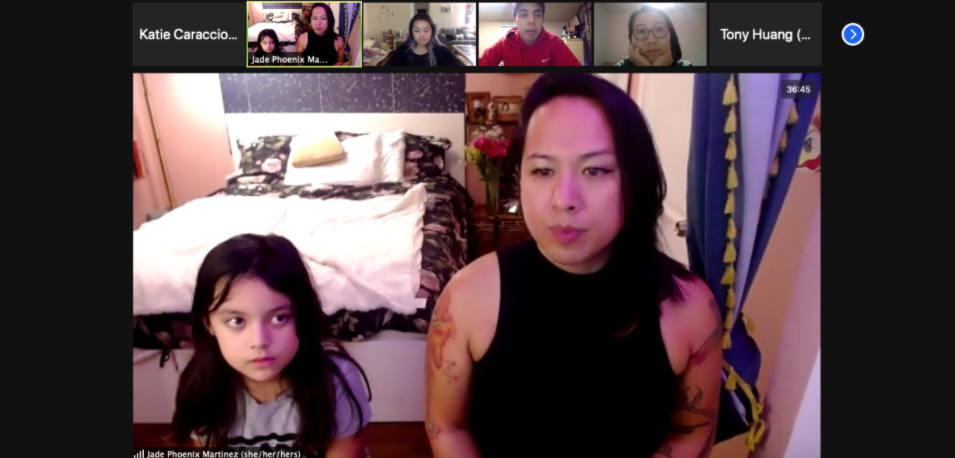Last Wednesday, as part of the UC Santa Barbara Multicultural Center’s “Cup of Culture Series,” poet and filmmaker Jade Phoenix Martinez, along with her 8-year-old daughter Alaizah Martinez, led a Q&A discussion following a screening of the duo’s heart-wrenching short film, “How to Make a Rainbow.”
Framed around the changing seasons over the course of two years, Martinez and her daughter “move through [their] own personal seasons,” capturing key moments in Alaizah’s childhood, as well as important junctures in Martinez’s transition. Through young Alaizah’s sincere eyes, the film confronts questions of family, identity and expression.
In the Q&A portion of the evening, Martinez revealed her main motivation for making the film, explaining that the film “[shows] how kids can grasp these concepts [of gender identity] … [and that] if these kids can understand these concepts, you should be able to also.”
“I really feel like it’s important that children at a young age start to deal with these issues … if we feel like this is too much for them, we’re short-changing them … it’s better to educate them now,” she continued.
The film was made with a skeleton crew of three people: Martinez, Alaizah and director Ryan Maxey. Martinez curated each shot, but “the wild card was always Alaizah … what she did was the documentary part of it.” Alaizah shared that she was not always enthusiastic about filming, but was motivated by the fact that she was being paid for her time and labor, a fact that surprised some audience members. As Martinez said, “She has a unique gift and a unique thing to bring to the world, and she should never let anyone take advantage of that.” True to point, Martinez said that she was also paying Alaizah for her time at this very screening.
Now in second grade, Alaizah shared that she loves Roblox, she just finished watching “She-Ra” on Netflix and her favorite snack is Pringles. She declared, “[my] favorite scene [of the film] was either the birthday or the unicorn story, and … I don’t really have a least favorite part!”
Martinez also opened up about her relationship with her parents, Alaizah’s grandparents, and their unwillingness to accept her transition. “Either you will use my pronouns and my name or you won’t see me and my daughter anymore,” Martinez said, referencing a period of estrangement from her parents after they corrected Alaizah for using her mother’s correct name and pronouns. “We grew up in a very evangelical, conservative home,” Martinez said, but after sharing “How to Build a Rainbow” with them, something changed. “I don’t know how they reacted to it, but I know I sent it to them to watch, and I know shortly thereafter, they changed.”
This familial difficulty, however, takes a backseat in the film to the loving, joyful relationship between Martinez and Alaizah. “So many trans narratives are rooted in trauma. We wanted to tell a trans story that was more joyful and wholesome, and I’m glad that I was able to do that,” Martinez said. Indeed, several audience members remarked that they were moved to joyful tears by the film, to which Martinez excitedly responded, “That’s exactly what we’re going for!”
Above all else, both the film “How to Make a Rainbow” and Martinez’s words in the Q&A session reinforce how important it was for her that she and her daughter embark on the journey of her gender transition together. “It was a transition for all of us, but ultimately she figured it out, and I figured it out,” Martinez expressed. The strength of Martinez’s bond with Alaizah shines through in every aspect of the film, and as Martinez concluded, in addition to sharing the story of her transition, “I’m also just raising a kid to be a human — a kind and good person in this world.”

















